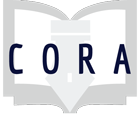Short Description:
This activity/assignment was designed for a first year composition course in collaboration with an English/Writing instructor. It could be used in an information literacy credit course, First Year Experience course, or in another discipline-specific context. The purpose of the lesson is to lay the foundation for students to be able to read scholarly work more effectively and critically.
Students are given instruction on reading a scholarly article and directed to look for key pieces of information such as research question or hypothesis, methods, participants or data sources, key findings, and limitations of the study. The instructor then shows an infographic (prepared in advance) showing those key pieces of information in a concise, visual format. Students are introduced to an online infographic maker such as easel.ly or piktochart, and directed to create their own infographic on the article as practice.
The graded assignment is for students to create an infographic on a scholarly article of their choosing, relevant to a larger research assignment in the composition (or other) course (e.g. an annotated bibliography).
Learning Outcomes:
1. Students will be able to identify the components of a scholarly journal article in order to become familiar with common structures of research articles.
2. Students will be able to locate the key pieces of information (hypothesis or research question, methodology, participants or data sources, findings, and limitations) in a scholarly journal article in order to read for understanding.
3. Students will be able to present the key pieces of information from a scholarly article in a visual format using infographic or other online creation tools.
Course Context (e.g. how it was implemented or integrated):
This assignment was created for a first year composition course in collaboration with the instructor. She wanted to use infographics as a method for teaching multimodal writing, and I wanted a strategy for showing how to read scholarly articles. This activity was conducted on my second visit to class, so students already had instruction on source types and characteristics of scholarly articles. We'd also had a discussion about the concept Scholarship as a Conversation. I spent the class time following the lesson plan as written, and the following class day the students had time in the computer lab with their instructor to create their own infographics. The final essay for the class is an argumentative essay, requiring 5 sources, 2 of which must be scholarly. An infographic summarizing one of the scholarly articles is required as an attachment to the essay.

